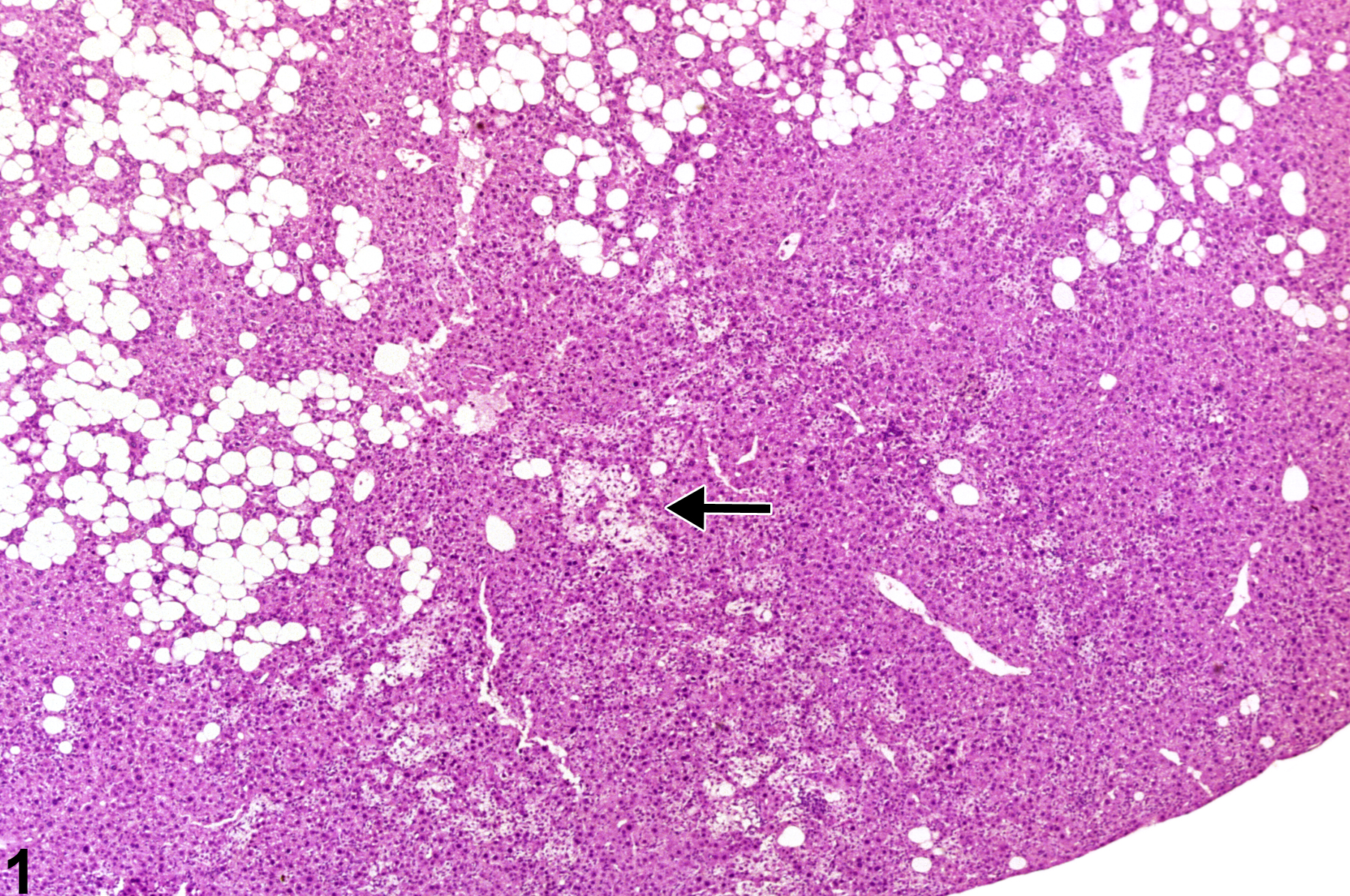Hepatobiliary System
Liver, Stellate Cell - Hyperplasia
Narrative
Dixon D, Yoshitomi K, Boorman GA, Maronpot RR. 1994. “Lipomatous” lesions of unknown cellular origin in the liver of B6C3F1 mice. Vet Pathol 31:173-182.
Abstract: https://www.ncbi.nlm.nih.gov/pubmed/8203079Harada T, Enomoto A, Boorman GA, Maronpot RR. 1999. Liver and gallbladder. In: Pathology of the Mouse: Reference and Atlas (Maronpot RR, Boorman GA, Gaul BW, eds). Cache River Press, Vienna, IL, 119-183.
Abstract: http://www.cacheriverpress.com/books/pathmouse.htmNational Toxicology Program. 1987. NTP TR-324. Toxicology and Carcinogenesis Studies of Boric Acid (CAS No. 10043-35-3) in B6C3F1 Mice (Feed Studies). NTP, Research Triangle Park, NC.
Full Text: https://ntp.niehs.nih.gov/ntp/htdocs/lt_rpts/tr324.pdfThoolen B, Maronpot RR, Harada T, Nyska A, Rousseaux C, Nolte T, Malarkey D, Kaufmann W, Kutter K, Deschl U, Nakae D, Gregson R, Winlove M, Brix A, Singl B, Belpoggi F, Ward JM. 2010. Hepatobiliary lesion nomenclature and diagnostic criteria for lesions in rats and mice (INHAND). Toxicol Pathol 38:5S-81S.
Full Text: http://tpx.sagepub.com/content/38/7_suppl/5S.full
Stellate cell hyperplasia-arrow indicates spindloid morphology in a female B6C3F1 mouse from a chronic study.



